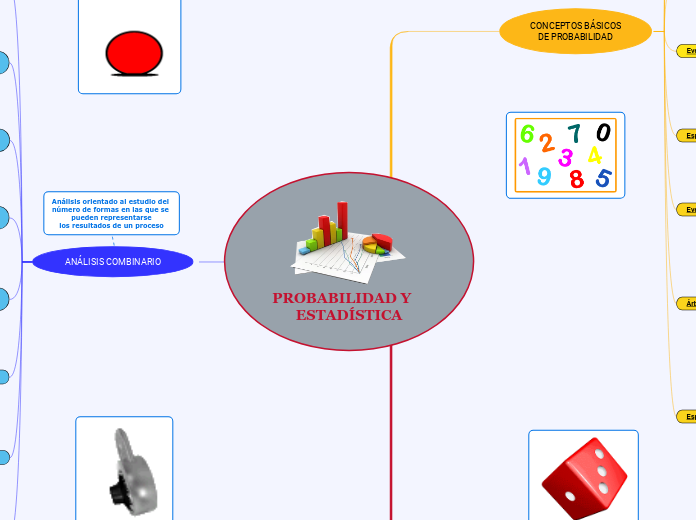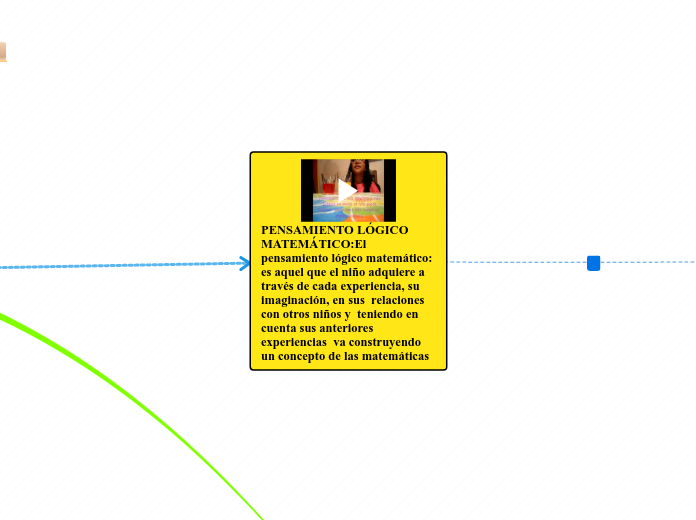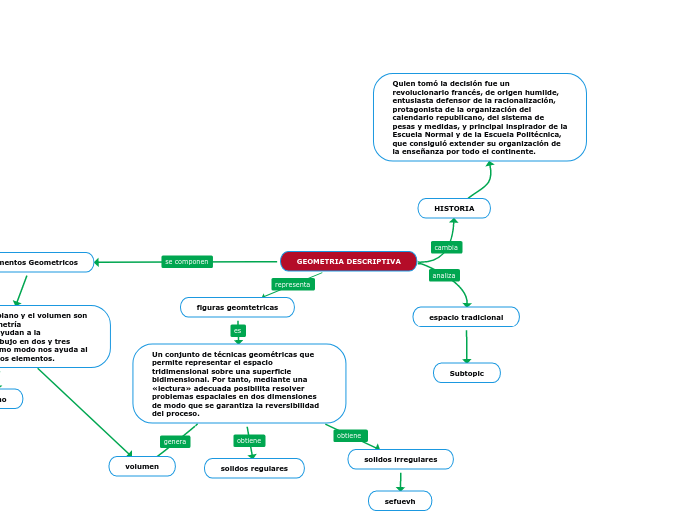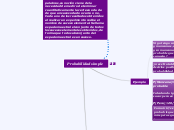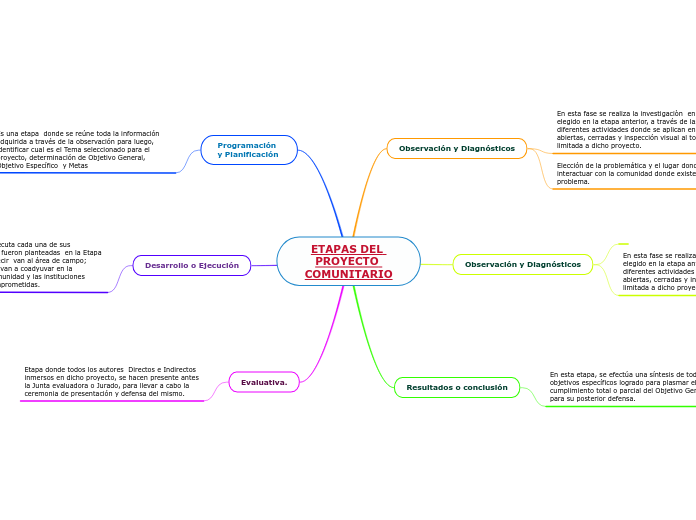PAOLA VIDAL ORTEGA 501
cart
Cálculo de la probabilidad de un evento,
cuando se sabe que ya ocurrió otro con el cual está relacionado.
Por medio del cual una persona
toma decisiones sin la certeza de que
ocurran todos sus supuestos
Análisis orientado al estudio del
número de formas en las que se
pueden representarse
los resultados de un proceso
PROBABILIDAD Y ESTADÍSTICA
The Solar System is the gravitationally bound system of the Sun and the objects that orbit it, either directly or indirectly. Of the objects that orbit the Sun directly, the largest are the eight planets, with the remainder being smaller objects, the dwarf planets, and small Solar System bodies.
ANÁLISIS COMBINARIO
Neptune is about the size of Uranus and is known for supersonic strong winds.
Neptune is far out and cold.
The planet is more than 30 times as far from the sun as Earth.
Neptune was the first planet predicted to exist by using math, before it was visually detected. Neptune is about 17 times as massive as Earth and has a rocky core.
Multiplicación de
combinaciones
5C3=[5 3]=5!/3!(5-2)! =5!/3!.2!=120/12=10
4C2=[4 2]=4!/2!(4-2)! =4!/2!.2!=24/4=6
TOTAL=(10)(6)=60
De un tal de 5 hombres y 4 mujeres se va a formar
un comité de 3 hombres y 2 mujeres. ¿De cuántas
formas pueden quedar integradas?
Multiplicar el resultado de varios casos para
obtener el número total de combinaciones
Combinaciones
5C2=[5 3]
=5!/3!(5-2)1=5!/3!.2!
=120/12=10 combinaciones
¿De cuántas formas diferentes se
pueden seleccionar?
En un grupo hay 5 personas, las que pueden
identificar con las letras A, B, C, D y E. De
ellas se van a seleccionar 3 para una misión
especial
Forma en la que pueden presentarse los objetos o eventos, y en la que el orden de
aparición no importa
Permutación con remplazo
N^m
2^4=16
Los resultados posibles de un juego
son ganar o perder. Si se juegan en
4 juegos, ¿Cuáles son los posibles resultados?
Cuando el número de veces que se representa un objeto sea infinito
Permutar algunos objetos,
de algunos repetidos
En una bolsa hay 2 bolas rojas, y 5 verdes.
Si se extraen de ellas ¿En qué orden pueden
aparecer?
Solo es posible mediante diagramas cuando se toman algunos objetos en un conjunto que contiene varios artículos iguales
Permutar todos los objetos,
de algunos repetidos
Neptune has thirteen moons that we know of and one more waiting for confirmation.
The largest moon is slightly smaller than Earth's Moon and has active volcanoes which erupt like geysers and eject nitrogen frost over the surface.
Name this moon and at least 4 others.
Formas= (2+5)!/2!.5!= 7!/2!.5!
Formas= 7.6.5.4.3.2.1/(2.1)(5.4.3.2.1)
=5040/2.120
Formas=5040/240=21
En una mochila hay 2 bolas rojas y 5
verdes. Si se extraen una por una de
la caja ¿En qué orden pueden aparecer?
Formas diferentes en que pueden ordenarse K1, K2, ... y Kn objetos iguales entre sí
Permutar todos los objetos,
de todos diferentes
How long does it take for Neptune to go around the sun?
n!=4!=4.3.2.1=24
En una mochila hay 4 pelotas (azul, negra
roja y verde). Si se extraen una por una
de la caja ¿En qué orden pueden aparecer?
Formas diferentes en que puede ordenarse n objetos diferentes cuando se toman uno en uno
Permutar algunos objetos,
de todos diferentes
A planet's day is the time it takes the planet to rotate or spin once on its axis.
Write down Neptune's day measured in Earth days.
4P2=4!/2!=4.3.2.1/2.1
4p2=24/2=12
En una caja hay 4 pelotas
(azul, negra, roja y verde). Si se extraen 2
de ellas ¿En qué orden pueden aparecer?
Formas diferentes en que se puede ordenarse n objetos diferentes cuando se toman algunos de éstos
Permutaciones
nPr=n!/(n-r)!
n=es el número total de objetos o eventos
r= es el número de objetos que se desea considerar
Es una forma en la que pueden presentarse,
los objetos o eventos, y la que el orden de
aparición es muy importante
PROBABILIDAD CONDICIONAL
Mars is a cold, desert-like place covered in dust. This dust is made of iron oxides, giving the planet its iconic red hue.
Mars shares similarities with Earth: It is rocky, has mountains, valleys and canyons, and storm systems ranging from localized tornado-like dust devils to planet-engulfing dust storms.
La formula de Bayes
Mars has two small moons.
Name these moons.
P(B A)=P(A B).P(B)
--------------
P(A)
Permite calcular la probabilidad de que ocurre
el evento B, si se sabe que ya ocurrió el evento A
Análisis de probabilidades
condicionales
How long does it take for Mars to go around the sun?
Muestra frecuencia con que se presentan todos los resultados posibles de dos variables de un mismo suceso
Tipos de probabilidad
A planet's day is the time it takes the planet to rotate or spin once on its axis.
Write down Mars's day measured in Earth days.
Probabilidad condicional
Si selecciona una camioneta de 4 puertas.
¿Cuál es la probabilidad de que sea blanco?
P(Blanco, 4 puertas)
=#de autos blancos 4 puertas
-----------------------------------
total de autos 4 puertas
Compuesta o conjunta
Probabilidad de que una camioneta
sea blanco de 4 puertas
P(blanco, 4 puertas)
=#de autos blancos 4 puertas
----------------------------------
total de autos de 4 puertas
Probabilidad simple
Probabilidad de que un auto
sea blanco
P=n/N
=#total de autos blancos/total de autos
Diagramas de Venn
Cálculo de la probabilidad de un evento, cuando ya ocurrió otro relacionado
CONCEPTOS BÁSICOS
DE PROBABILIDAD
Venus is Earth's twin in size and has no moons.
Its surface has various mountains and volcanoes. Because of its thick, toxic atmosphere that's made of sulfuric acid clouds, Venus is an extreme example of the greenhouse effect. The average temperature on Venus' surface is 900 F (465 C).
Venus spins slowly from east to west, the opposite direction to most of the other planets.
The Greeks believed Venus was two different objects — one in the morning sky and another in the evening. Because it is often brighter than any other object in the sky, Venus has generated many UFO reports.
Esperanza matemática
Sea determinado que el proyecto A tiene los siguientes resultados posibles, así como las probabilidades de que ocurra cada uno de ello
EMB=(900)(0.10)+(500)(0.25)+(200)(0.15)+(100)(0.15)-(700)(0.35)=$15
EMA=(500)(0.15)+(300)(0.45)+(100)(0.15)-(700)(0.25)=$50
Promedio de los resultados de un proceso o experimento
Árbol de probabilidad
Gráfica que presenta los resultados posibles de un evento, así como la probabilidad de cada uno de ellos
Eventos independientes
Una bolsa tiene 6 billetes de $20, 3 de $50 y 1 de $200.
¿Cuál es la probabilidad de que al sacar uno éste sea de $20 0 $50?
Pt=6/6+3+1 + 3/6+3+1
=6/10+3/10=0.9=90%
Cuando se ven afectados por otros
Espacio muestral
a)El dado verde es 4 o 6, b) el dado verde es 4 o 6, y el rojo mayor que 3, c) el dado verde es menor que 4, o el rojo es mayor que 4
b) P=n/N=6/36=1/6=0.167=16.7%
a) P=n/N=12/36=1/3=0.33=33.3%
Conjunto de resultados de un proceso o experimento
Eventos dependientes
Una bolsa tiene 6 billetes de $20, 3 de $50 y 1 de $200. ¿Cuál es la probabilidad de que al extraer 2 billetes ambos sean de $20?
P(A y B)=(0.9)(0.5556)=0.333=33.3%
P(A)=676+3+1=6/10=0.9
Cuando un evento afecta la probabilidad que suceda otro
Eventos mutuamente excluyentes
How long does it take for Venus to go around the sun?
Una bolsa tiene 6 billetes de $20, 3 de $50 y 1 de $200.
¿Cuál es la probabilidad de que al extraer uno sea de $200?
P=n/N = 1/6+3+1 = 1/10
=0.1 = 10%
No ocurren al mismo tiempo
Suma y multiplicación de
probabilidades
A planet's day is the time it takes the planet to rotate or spin once on its axis.
Write down Venus's day measured in Earth days.
-Si son dependientes, se considera la posibilidad de otro evento, si ya ocurrió uno, se calcula así:
P(A y B)=P(A)*P(B/A)
-De ser eventos independientes la probabilidad total se calcula multiplicando las probabilidades individuales
P(A y B)=P(A)*P(B)
-En eventos no excluyentes entre sí, debe restarse la probabilidad de ambos de su suma directa
P(A o B)=P(A)+P(B)-P(A y B)
-Si los eventos son disjuntos la probabilidad total se saca con la suma de las probabilidades
P(A o B)= P(A)+P(B)
Tipos de eventos
Our Solar System has eight “official” planets which orbit the Sun.
Each planet is at a different distance from the sun. Name its position.
Se clasifican en:
-Mutuamente excluyente o disjuntos.
-Independientes.
-Dependientes.
-No excluyentes entre sí.
Resultado posible, o un grupo de resultados
posibles, de un experimento o proceso observado
Subjetiva
Probabilidad= No. eventos exitosos
-----------------------
No. total de intentos
= P=n/N
Solo es posible cuantificarse
mediante factores
Percepción
Objetiva
Probabilidad (pera)= 40/200=0.2
Cálculo
